Thermostat Wiring Color Code [Complete Guide]
Are you ready to take charge of your heating and cooling system? Look no further! In this comprehensive guide, we provide you with everything you need to know about thermostat wiring code. From understanding wire functions to ensuring compatibility, we’ve got you covered. Say goodbye to confusion and hello to a smooth and successful installation.
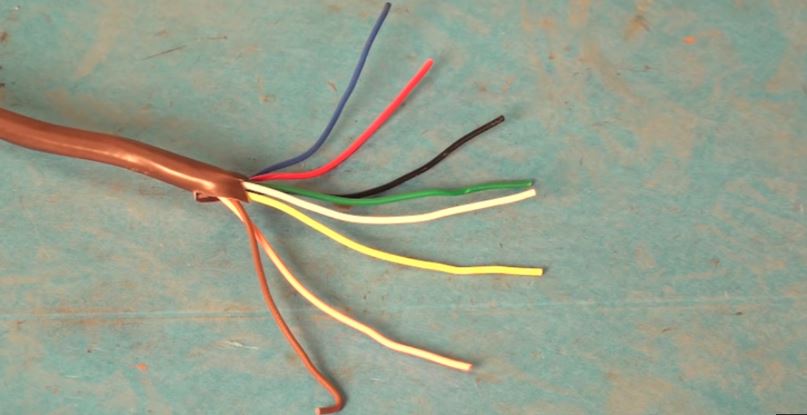
Read also: How to wire a Nest thermostat
Chart for Thermostat Wiring Code, Designation and Function
| Color of wire | Designation | Function |
| Red | R | Power from the transform |
| Not fixed | Rc | Power for cooling |
| Red | Rh | Power for heating |
| Blue | B | Common wire |
| Gren | G | Fan relay |
| Orange | O/B | Reversing valve |
| Yellow | Y/Y1 | Compressor relays |
| Light blue/ others | Y2 | Compressor relays stage 2 |
| White | W | Stage 1 heat |
| Black | X | Backup heat |
| Brown/ Not fixed | AUX/E/W2 | Auxiliary/ Emergency/secondary heat |
| Not fixed | ACC | Can be used for Humidifier/ Dehumidifier |
| Not fixed | S, S1, S2: | Outdoor temperature sensors |
| Not fixed | L | Heat Pump fault input |
| Not fixed | K | Honeywell saver module |
Red wire
The red wire can either R, Rc or Rh. let’s look at what each of these wires really is below
R: This is the power wire for the heating system. It carries 24-volt power from the transformer to the thermostat.
Rc: This is the power wire for cooling. Some thermostats have separate Rc and R terminals. In that case you will need to put a jumper between the two terminals and connect them to the R wire.
For a honeywell; pro series thermostat, there is already a slide ta switch that you’ll just have to slide to the up position to make a jumper between the R and Rc termina
Rh: This is the power wire for heating. In some systems, separate Rc and Rh wires are used for cooling and heating power, while in others, a single R wire is used for both.
Blue Wire
This is the common wire (C.) It provides a continuous 24-volt power supply to the thermostat, ensuring its proper functioning. Not all thermostats require a C wire, but it is commonly used in programmable thermostats, especially those with Wi-Fi connectivity.
Green Wire
The G wire (or G terminal) controls the fan. When the thermostat calls for the fan to operate, the G wire carries the signal to turn on the fan.
Orange Wire
O/B: The O/B wire (or O/B terminal) is used in heat pump systems. It controls the reversing valve, which determines whether the system is in heating mode (O) or cooling mode (B).
Yellow Wire
Y/Y1: The Y wire (or Y1 terminal) controls the cooling system. When the thermostat calls for cooling, the Y wire sends a signal to start the compressor and air conditioning unit.
Read also: White Rodgers Thermostat Wiring to Nest [How To]
Light Blue
Y2: The Y2 wire (or Y2 terminal) is an additional wire used for cooling in systems with two-stage cooling. It operates the second stage of cooling, providing additional cooling capacity when needed.
White Wire
W: The W wire (or W terminal) controls heating. When the thermostat calls for heat, the W wire sends a signal to the furnace or boiler to start the heating process.
Black Wire
X: The X wire was mainly used in old mercury thermostat wiring. It is not a standard thermostat wire label in modern thermostat . It was mainly used for backup heat.
Please note again that this is not commonly found in most residential thermostat installations.
Brown Wire
AUX/E/W2: The AUX, E, or W2 wires are used for auxiliary or emergency heating in heat pump systems. It activates the secondary heating source, such as electric heating strips or a gas furnace, when the heat pump alone cannot meet the heating demands.
No Fixed Color Wires
ACC: The ACC wire: is not a standard thermostat wire label. When present however it may be used for connecting additional devices such as dehumidifiers and humidifiers.
S, S1, S2: The S, S1, The wires are commonly used for functions such as outdoor temperature sensors or system status indicators.
L: This terminal is designated for indicator lights on the thermostat, sometimes for when auxiliary or emergency heat is turned on, or if there’s a general problem with your system.
K: The K wire is a honeywell wire saver module. This is simply formed by combining the y and the G terminal terminal to form a single k wire that goes onto the K terminal. It is used on systems that don’t provide the C wire but with a thermostat that requires one.
Read also: Amazon Smart Thermostat Wiring Diagram for Heat Pump [Full Guide]
5 wire thermostat wiring color code
Systems that use 5 wires wiring include
- 2 stage furnace
- 1st stage furnace and st stage air conditioner
- 1st stage heat pump system
| Type of system | G (Green) | Y (Yellow) | C (Blue) | R (Red) | W (White) | W2/Aux(Brown) | O/B (Orange) |
| 2nd stage furnace | Yes | Not needed | Yes | Yes | Yes | Yes | Not needed |
| 1st stage furnace and 1st stage air conditioner | Yes | Yes | Yes | Yes | Yes | Not needed | Not needed |
| 1st stage heat pump system | Yes | Yes | Yes | Yes | Not needed | Not needed | Yes |
4 Wire thermostat wiring color code
Systems that may utilize the 4 wiring code include the following:
- 1st stage furnace
| Type of system | G (Green) | R (Red) | W (White) | C (Blue) |
| 1st stage furnace | Yes | Yes | Yes | Yes |
6 wire thermostat wiring color code
Systems that will have 6 wiring code may include
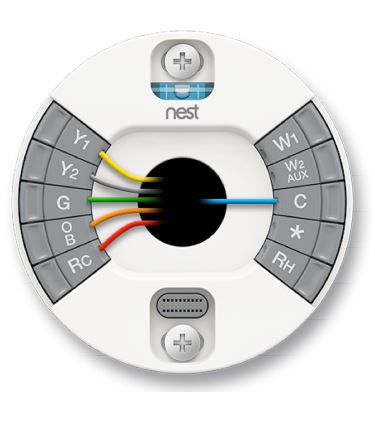
- Furnace stage 3 Heating
- 2nd Stage Furnace with 1st stage air conditioner
- 1st Stage furnace with 2nd stage air conditioner
- 1st Stage Heat Pump with Aux Heat
- 2nd Stage Heat Pump
- 1 Stage Heat Pump, 1 Stage Heat
| Type of system | Y(Yell0w) | Y2 | G (Green) | O/B (Orange | R (Red) | W1 (White) | W2/Aux (Brown) | C (Blue) | W3/E |
| Furnace stage 3 Heating | Yes | Yes | Yes | Yes | Yes | Yes | |||
| 2nd Stage Furnace with 1st stage air conditioner | Yes | Not needed | Yes | Not needed | Yes | Yes | Yes | Yes | Not needed |
| 1st Stage furnace with 2nd stage air conditioner | Yes | Yes | Yes | Not needed | Yes | Yes | Not needed | Yes | Not needed |
| 1st Stage Heat Pump with Aux Heat | Yes | Not needed | Yes | Yes | Yes | Not needed | Yes | Yes | Not needed |
| 2nd Stage Heat Pump | Yes | Yes | Yes | Yes | Not needed | Not needed | Not needed | Yes | Not needed |
| 1 Stage Heat Pump, 1 Stage Heat | Yes | Not needed | Yes | Yes | Yes | Yes | Not needed | Yes | not needed |
7 wire thermostat wiring color code
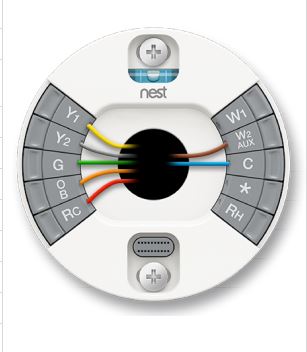
- 2nd Stage Heat Pump with Aux Heat
- 2nd Stage Heat Pump, 1 Stage Heat
- 1 Stage Heat Pump, 2 Stage Heat
| 2nd Stage Heat Pump with Aux Heat | 2 Stage Heat Pump, 1 Stage Heat | 1 Stage Heat Pump, 2 Stage Heat | |
| Y | Yes | Yes | Yes |
| Y2 | Yes | Yes | Not needed |
| W1 | Not needed | Not needed | Yes |
| Aux/W2 | Yes | Yes | Yes |
| C | Yes | Yes | Yes |
| R | Yes | Yes | Yes |
| G | Yes | Yes | Yes |
| O/B | Yes | Yes | Yes |
Read also: Carrier Infinity Thermostat Wiring To Nest or Honeywell [Complete Guide]
FAQ
Can I install a thermostat without professional assistance?
Yes you can. In fact if you are familiar or comfortable with handling electrical components, go for it, it will save you some bucks. On the other hand if you are unfamiliar with electrical systems or uncomfortable with doing it on your own, calling a pro may be the best option.
Why is it important to follow the thermostat wiring code?
Adhering to the thermostat wiring code is important for several reasons. First, it ensures the safe and efficient operation of your HVAC system.
Second, it helps prevent damage to the thermostat, HVAC equipment, or other electrical components.
Lastly, following the code ensures compatibility between thermostats and HVAC systems, reducing the risk of compatibility issues or malfunctions.
Can I install a thermostat without following the wiring code?
It is strongly recommended to follow the thermostat wiring code when installing a thermostat. Not following the code can lead to various issues, including electrical shorts, damage to equipment, incorrect temperature control, and even safety hazards.
Read also: How to bypass a thermostat
Final thoughts
Conclusion: Following the thermostat wiring code is crucial for the safe and efficient operation of your HVAC system.
It ensures compatibility between thermostats and HVAC systems, reduces the risk of malfunctions and compatibility issues, and helps prevent damage to the thermostat, HVAC equipment, and other electrical components.
Read also: How to install a thermostat without C wire
While it is possible to install a thermostat without professional assistance, it is strongly recommended to adhere to the wiring code to avoid electrical shorts, incorrect temperature control, equipment damage, and potential safety hazards.
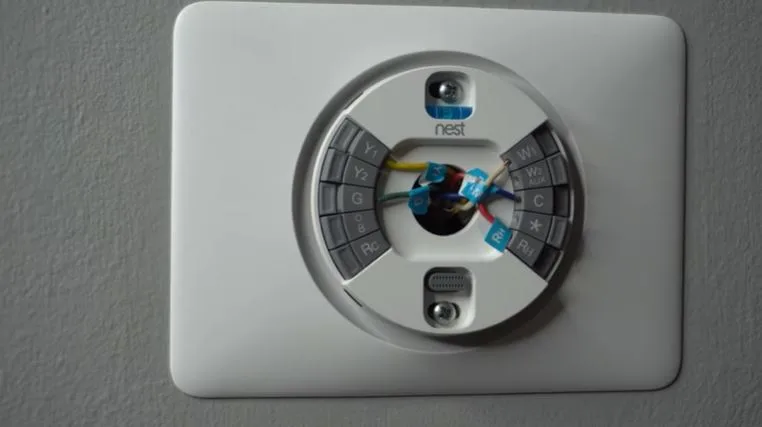
![Heat Pump Emergency Heat Not Working [Fixed]](https://thermostating.com/wp-content/uploads/2023/08/rusted-heat-strips-768x429.jpg)
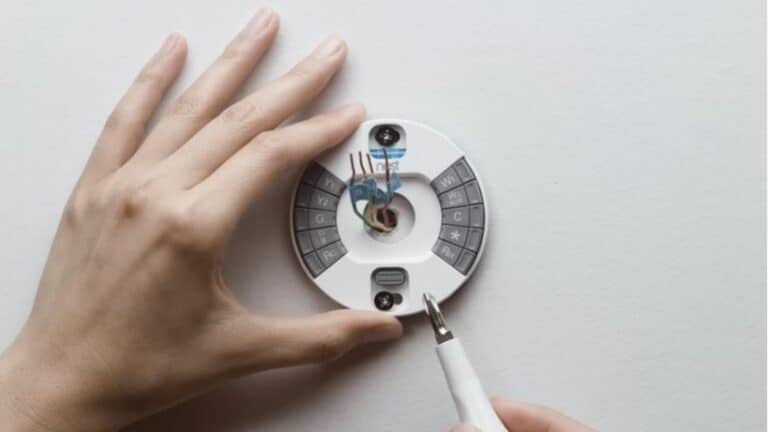
![Amazon Smart Thermostat Wiring Diagram for Heat Pump [Full Guide]](https://thermostating.com/wp-content/uploads/2023/04/amazon-thermostat-1-jpg.webp)
![Old Trane Thermostat Wiring To New Thermostat [Full Guide]](https://thermostating.com/wp-content/uploads/2023/04/weathertron-2-scaled-e1681812182757-768x576.webp)
![White Rodgers Thermostat Keeps Resetting to 85 [Fixed]](https://thermostating.com/wp-content/uploads/2023/02/white-rodgers-thermostat-768x395.png)